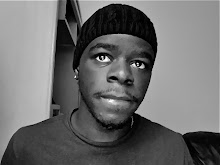Saturday, May 15, 2010
"What I See"
For this exercise, I chose to analyze Alfred Hitchcock's "Psycho." One of the greatest and pioneering movies in history, "Psycho" is a masterpiece that embodies all the key concepts of a classic feature film. One of the most powerful technique used in the movie is the camera-audience (viewer) relationship that Alfred Hitchcock builds throughout the movie. He clearly understood and viewed the camera as the eyes of the viewer; we only get to see what he wants us to see. This plays a huge role in the plot of the movie because Norman Bates, the main character, engages in a lot of private agendas that needed to be shielded from the viewer. A particular sequence that exemplifies how the shot reflects a major theme in the movie is the scene where Norman Bates and Marion Crane have "dinner" in his back office. The camera starts the sequence with both characters in a medium shot. It switches to a medium of each character separately as they converse. The most significant camera work of this sequence is when Norman started talking about his mother. He is framed in a low-angle shot that shows his stuffed birds eerily hovering over his head as if his mother was there watching the conversation quietly. The famous "shower scene" was also done with amazing technical detail.>Looking at the storyboard of the sequence, Hitchcock paid a lot of detail to the way the stabbing of Marion is portrayed. Also, the close-up shot of her eye after the brutal murder plays into the viewpoint theme of the movie.
Subscribe to:
Post Comments (Atom)

No comments:
Post a Comment